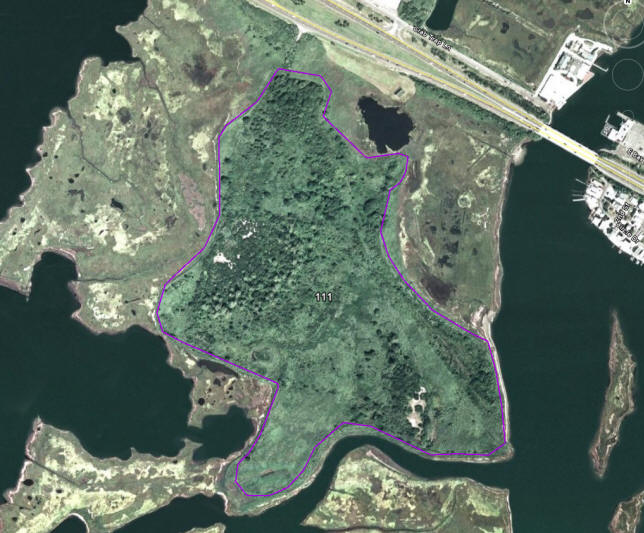Project 1:Confined Disposal Facility
111 – Cedar Bonnet CDF
Cedar Bonnet Island is a federally-owned confined disposal facility and part of the Forsythe National Wildlife Refuge. The island is directly west of the borough of Ship Bottom on Long Beach Island, but is physically located in Stafford Township. It is adjacent to route 72 and can be accessed by land or water. The confined area on the island is approximately 56 acres and has a non-symmetrical shape. The entire site is heavily vegetated with Phragmites, trees and brush. Sediment and GPS data were collected in a cell on the western border. Berm wall heights in this region reached 12 ft NAVD88 and 2 sediment cores were taken that reached over ten feet into the sediment cover over the original marsh. The longer core was 98.1% sand and had an average grain size of 1.5 phi. This makes it an excellent source of sand except for the location and habitat now present on the site.
The entire Cedar Bonnet island complex, including the developed portion known as Bonnet Island, is a deposit of sand likely due to a storm breach in Long Beach Island prior to historical records. The resulting inlet remained open for some time allowing the deposition of a flood-tidal delta until the inlet closed. Marsh sediments established on the sandbars and continued this site as the largest of the marsh islands located along the western border of Long Beach Island. Today large flood-tidal deltas exist around both Barnegat and Little Egg Harbor Inlets.
|
|
|
|
|
|
|
|

The site #1 core recovered 10.3 feet
between the auger and the piston core section. The salt marsh was penetrated at a depth of
8.0 feet with the overlying sediment 76% sand with a moderately fine size of
2.75 phi.

The site #2 core reached 10.6 feet and did
not penetrate the original salt marsh surface. The sand percentage reached 98.1% with an
average size of 1.5 phi. The variety of
layers point to extensive repetitive use of this site for dredge material
placement. This material would make
excellent recovery product except for the location and presence of extensive
wildlife habitat that developed on site.
